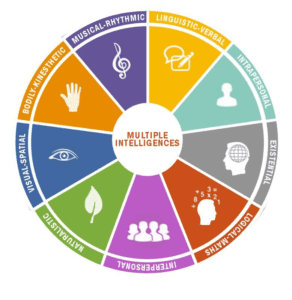Learning Spanish is important in the U.S.
Spanish and Latin American culture are embedded in parts of this country – namely Florida, Texas, Arizona, New Mexico and California. Spanish classes expand our horizons, helping us understand a “foreign” culture that has been part of the U.S. for hundreds of years. In-person or online Spanish classes pay off in terms of personal enrichment, career growth, academic interest, and more. So let’s check out the top seven reasons to learn Spanish.
Reason #1 Let’s Broaden Our Cultural Awareness with Spanish classes
Not only does speaking Spanish help us understand different mindsets, but Spanish classes can help us understand the history of different areas of the U.S. Of course, we can study about these places in English, but it is rewarding to be able to understand the meaning of Spanish idioms and sayings and therefore understand the significance of certain attitudes of people of Spanish descent. Cultural awareness is one of the top reasons to learn Spanish in the U.S.
Reason #2 Large Spanish-speaking Population in the U.S.
Most Spanish speakers in the U.S. also speak English. There is a feeling of comradery when a native English speaker can also speak Spanish. A Spanglish conversation can be fun and informative.
Here’s an example of how Spanish lessons shed light on both language and life. A Spanish equivalent of the English phrase ‘at this stage of the game’ is ‘a estas alturas’ (at these heights). I prefer the latter because as I age I realize I’m closer to the infinite and I need to keep my balance.
Just as English in different regions of the U.S. has different pronunciation and vocabulary, so does Spanish, making Spanish classes endlessly fascinating. It’s fun to learn what you might say to a person of Cuban descent is not appropriate to one of Mexican lineage. Like the British student asking me for a rubber (eraser) all those years ago.
Reason #3 Job Opportunity Reasons to Learn Spanish
Bilingualism is a plus for many jobs, making Spanish classes a smart career move. In the U.S. Spanish is the most widely spoken language after English. The language school that I co-founded 37 years ago has taught Spanish at local hospitals, social service organizations, factories, local businesses, colleges, elementary schools, unions and even at the National Guard. These entities were willing to pay for their employees/members to take in-person or online Spanish classes. What a plus to apply for a job already having Spanish lessons!
Reason #4 Travel Reasons to Learn Spanish
Wherever I travel, I always learn a little bit of the language of the countries I’m going to visit, if it’s not one of the six I speak.
Years ago, I was recruiting students for our Intensive English Program in Turkey. Even though I asked my Turkish translator if she was going home by pig (dolmuz) instead of by dolmush (mini-van taxi), the fact that I had tried in Turkish was appreciated.
Taking Spanish classes before traveling to Colombia or Spain shows respect and goes a long way to giving you a smooth path to explore. You’re not seen as “the ugly American”. Instead, you’re seen as someone who is the same as everyone else and who is being respectful by taking Spanish lessons before your trip. It’s ok to make mistakes. You’re human. Spanish speakers have a sense of humor too!
Reason #5: Literary Reasons to Learn Spanish
 Spanish poet Antonio Machado wrote my all-time favorite verses, which were later popularized by the singer Joan Manuel Serrat. “Caminante, no hay camino” more or less states that there is no path/way. You make your path by walking. There is no path but rather a wake in the sea.
Spanish poet Antonio Machado wrote my all-time favorite verses, which were later popularized by the singer Joan Manuel Serrat. “Caminante, no hay camino” more or less states that there is no path/way. You make your path by walking. There is no path but rather a wake in the sea.
I have used this in my writing and have compared it to Frost’s “The Road Not Taken”. Words, expressions, and ideas that we learn by taking Spanish classes can help us sort out what we believe and what we would like to express. I’m not talking “show-off” here, but rather a way to make connections and a way, if there is a need, to make things more substantive. Expanding our literary horizons and expressing ourselves with wider cultural knowledge are great academic reasons to learn Spanish.
Reason #6: Keep Your Brain Alive and Well with Spanish Lessons!
Brain research has led to the axiom that speaking more than one language is good for the brain. If you learn at least one language other than your native one, your brain will grow stronger as you age.
The best Spanish courses will keep your translating to a minimum. During a Spanish lesson you can mime eat and thus learn the Spanish equivalent comer without a translator. Good Spanish classes use visuals, actions, and games to stimulate communicative learning and mental strength .
Also, a good Spanish course will encourage you to make associations, which is another way to avoid a translator and exercise your brain. For example, I remember three of the five words I learned in Nepali because I made associations. Kera means banana, and I associated it with Karo Syrup, thinking a banana could be sweet! A banana isn’t necessarily sweet, but the association worked.
Another example of association is kitab, which means book, and I thought of it as the “key” to learning. Sancho is key and I figured that Sancho Panza was the key to Don Quixote’s success.
If you keep speaking the language the associations will eventually disappear, but as I don’t speak Nepali, I remember those three words because of the associations. Making associations can help the brain remember rather than memorize.
Harold Gardner’s Multiple Intelligences Theory states eight ways that people learn best: linguistic, logical-mathematical, spatial, bodily kinesthetic, musical, interpersonal, intrapersonal and naturalist. We could also include Coleman’s “emotional” intelligence. A good Spanish course will employ all of these intelligences through different activities that keep the students active and learning and having fun! Spanish courses with a student-centered classroom will allow students’ brains to function at a higher capacity than in a rigid classroom environment.
people learn best: linguistic, logical-mathematical, spatial, bodily kinesthetic, musical, interpersonal, intrapersonal and naturalist. We could also include Coleman’s “emotional” intelligence. A good Spanish course will employ all of these intelligences through different activities that keep the students active and learning and having fun! Spanish courses with a student-centered classroom will allow students’ brains to function at a higher capacity than in a rigid classroom environment.
Reason #7: It’s Easy to succeed in Spanish classes!!!!!
The level of difficulty for a U.S. English speaker to learn Spanish is lower than for many other languages. This is due to many reasons. Let’s look at a few:
- Familiar vocabulary. From Arnold Schwarzenegger’s “Hasta la vista, baby” to Ricky Martin’s “Livin’ La Vida Loca” everyone probably knows a few words or phrases in Spanish, which gives you a head start in Spanish classes. Was it Doris Day who sang “Mañana is good enough for me”? During in-person or online Spanish classes, these familiar phrases can be expanded on and teachers can use them to bolster students’ sense of confidence.
- Pronunciation. While pronunciation in English is a nightmare (take, for instance, how the letter “g” is pronounced in go, engine, night and gnarl), with a few exceptions, in Spanish what you see is what you get. One of the most phonetic alphabet/pronunciation systems, you can master Spanish pronunciation in an hour of Spanish lessons. Even if you end up speaking Spanish with a heavy “gringo” accent because it’s hard for you to let some sounds go, you will still be understood and appreciated.
- Cognates. Words that share the same roots are cognates. Excellent = excelente (but you will have learned to pronounce all the letters.) You can buy popular magazines that have lots of ads and pictures. Between the cognates and the clues from the pictures, you’ll be surprised at how much you understand even after just a few Spanish classes.
- Shortcuts you can take until your fluency rises. For instance, “acabar de + infinitive” means to have just done something. Rather than worry about the correct conjugation of various verbs, you can say “Acabo de comer,” I’ve just eaten. I don’t buy a new car that often so I could say “Acabo de comprar un coche” even if I bought it months ago. Another example of a shortcut is the use of “Qúe tal?” before a word or words, which can simplify inquiring about how something is/was. ¿Qué tal la fiesta? ¿Qué tal tu familia? ¿Qué tal las clases? The best in-person and online Spanish classes lead you towards acquiring these kinds of shortcuts to jump start.
 Spanish is a beautiful, useful, and fun language to learn. You can join student-centered Spanish classes, watch TV and movies with subtitles, buy popular magazines in Spanish, and listen to Spanish music. With so many reasons to learn Spanish, soon you’ll be “Livin’ la vida loca!”
Spanish is a beautiful, useful, and fun language to learn. You can join student-centered Spanish classes, watch TV and movies with subtitles, buy popular magazines in Spanish, and listen to Spanish music. With so many reasons to learn Spanish, soon you’ll be “Livin’ la vida loca!”
Alexis Johnson, Executive Director, Retired
Watch Alexis talk about her methodology for language learning and Spanish lessons.
Related Articles
- Darlene Tells Her Story: An Interview with Darlene, a Spanish language student living in the USA
- Kathy Learning Spanish (again): Interview with a Spanish language student living in the USA
- The rejection of perfection in language learning
- A guide for beginners on how to learn Spanish
- Our top 4 destinations to learn Spanish abroad
- Literate mending in multilingual families
- 4 Great Reasons Why You Should Learn Spanish in the USA